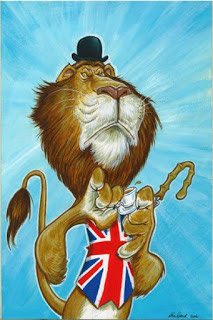| Are golliwogs offensive? | | | |
| Written by The Pilgrim |
| 15 December 2010 |
| Apparently Enid Blyton once wrote a story about a black doll that longed to be pink, which was subsequently rewritten as a story about a pink doll that longed to be black. In a similar vein, the Daily Mail recently reported that “Golliwogs are deeply offensive” – an allegation which lacks any basis in fact. The golliwog (originally written as golliwogg) was the creation of Florence Kate Upton. A young English woman living in late Victorian London, she took to writing illustrated books for children, but struggled to find a suitable protagonist until the discovery of a rag doll in the form of a black man gave her the inspiration she needed. Her books, co-written with her mother, were an immediate success, and thirteen Golliwogg storybooks were published between 1895 and 1909. Before long other writers were writing stories about golliwogs. Upton’s golliwogg was a charming and heroic black man in a minstrel’s outfit, who was accompanied by two wooden peg dolls (white females, apparently neither racist nor sexist). In the first golliwogg book, the dolls first see him as a “horrid sight”, but they soon realise that he is in fact friendly. Then all look round, as well they may To see a horrid sight! The blackest gnome Stands there alone, They scatter in their fright. With kindly smile he nearer draws; Begs them to feel no fear. "What is your name?" Cries Sarah Jane; "The 'Golliwogg' my dear." Their fears allayed--each takes an arm, While up and down they walk; With sidelong glance Each tries her chance, And charms him with "small talk". Golliwogs were sometimes presented by other writers as mischievous or even threatening, but more often than not they were shown in a positive light. The original Noddy books featured naughty gollies, which have long since been replaced by the goblins Sly and Gobbo, whereas another Enid Blyton book called The Three Golliwogs featured gollies who were resourceful and friendly. In the 1960s and 1970s, Ruth Ainsworth wrote books about a golliwog called Rufty Tufty, another example of gollies as friendly protagonists. Jars of Robertson’s jam and marmalade featured gollies on their labels from 1910 to the 1980s, and the company produced golly badges until 2001. They were commonly portrayed as cheerful characters, and they were referenced in the 1980s in the BBC television show The Two Ronnies. One of the sketches featured an Arab businessman (Ronnie Corbett) buying marmalade, and the shopkeeper (Ronnie Barker) took pleasure in telling him that the jar had one of his little cousins on the side. In those days that was considered to be a joke. The eventual demise of the Robertsons’s golly badges was not based on any lame response to political correctness, but rather on an acceptance that their appeal was by this time limited to adult collectors. Of course to be fair this was indirectly a result of political correctness. Gollies no longer featured in children’s books, and so they no longer held much appeal for children. Golly badges continue to be traded, and often fetch high prices. Those of us who care about The Bible should take a stand against the enemies of the gollywog. Otherwise it may not be too long before the Harriet Harman brigade demand that The Book of Jeremiah be purged of its offensive reference to black people. |
